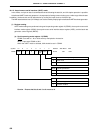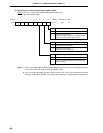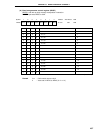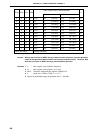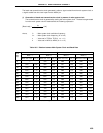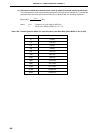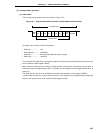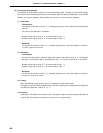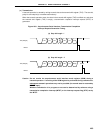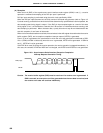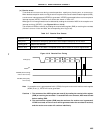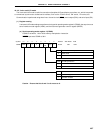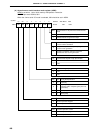
462
CHAPTER 19 SERIAL INTERFACE CHANNEL 2
(b) Parity types and operation
The parity bit is used to detect a bit error in the communication data. Normally, the same kind of parity
bit is used on the transmitting side and the receiving side. With even parity and odd parity, a one-bit (odd
number) error can be detected. With 0 parity and no parity, an error cannot be detected.
(i) Even parity
• Transmission
The number of bits with a value of “1”, including the parity bit, in the transmit data is controlled to
be even.
The value of the parity bit is as follows:
Number of bits with a value of “1” in transmit data is odd : 1
Number of bits with a value of “1” in transmit data is even : 0
• Reception
The number of bits with a value of “1”, including the parity bit, in the receive data is counted. If
it is odd, a parity error occurs.
(ii) Odd parity
• Transmission
Conversely to the situation with even parity, the number of bits with a value of “1”, including the
parity bit, in the transmit data is controlled to be odd. The value of the parity bit is as follows:
Number of bits with a value of “1” in transmit data is odd : 0
Number of bits with a value of “1” in transmit data is even : 1
• Reception
The number of bits with a value of “1”, including the parity bit, in the receive data is counted. If
it is even, a parity error occurs.
(iii) 0 Parity
When transmitting, the parity bit is set to “0” irrespective of the transmit data.
At reception, a parity bit check is not performed. Therefore, a parity error is not generated, irrespective
of whether the parity bit is set to “0” or “1”.
(iv) No parity
A parity bit is not added to the transmit data. At reception, data is received assuming that there is
no parity bit. Since there is no parity bit, a parity error is not generated.



